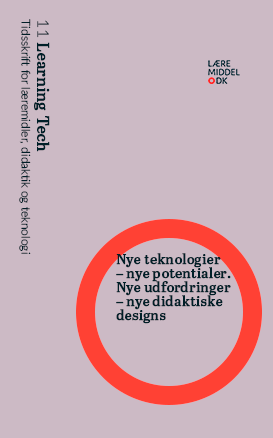Mellem design, didaktik og diskurs
En analyse af det adaptive læremiddel Rhapsode til matematikundervisning i folkeskolen
DOI:
https://doi.org/10.7146/lt.v7i11.128361Abstract
This article presents results from a study of the adaptive learning tool, Rhapsode, for mathematics in primary school based on a three-dimensional focus that includes discourse, didactics and design. Our purpose with the multi-stranded analysis strategy is partly to put (subject) didactics in the center, ie. what we want with the subject, and what the adaptive design does to the professionalism, partly to put the adaptive technology into a larger discursive context. This stands in contrast to the narrow focus on developing efficient adaptive machines that otherwise characterizes research in the field. The result is a sharpened focus on the dilemma-filled use of adaptive technology. The analysis indicates that there is a need for both a) redesign and development of the didactic framework of the adaptive material of the teaching aid, b) redidactization and reinterpretation of the didactic potential in practice and c) regulation and democratic control of the new business models that make data and algorithms for business development.
Downloads
Published
How to Cite
Issue
Section
License
Forfatterne og Læremiddel.dk.
Må ikke bruges kommercielt.


